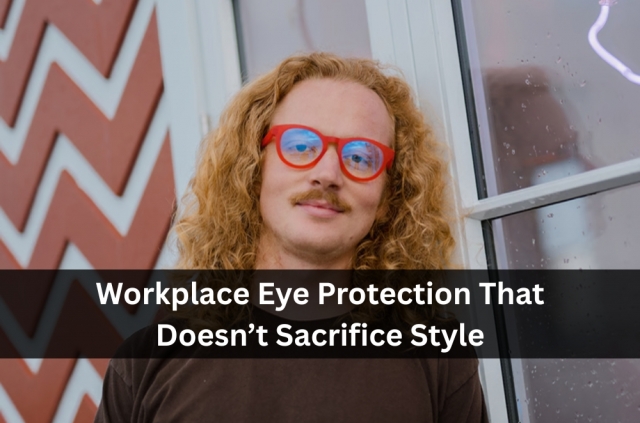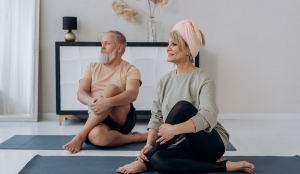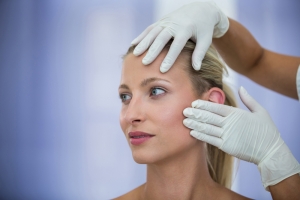Finding eyewear that protects without looking clunky shouldn't feel like a compromise. On the job, you're balancing hazards, screens, and long hours, so the right frame and lens combo has to handle knocks and glare while still looking sharp in meetings. From my own experience fitting people who move between lab benches and laptops, the winning pairs are practical first, stylish always. If you're mapping options for work glasses, start with the tasks you actually do: impact risk, screen time, and lighting. Then layer in shape, colour, and finish so you feel confident walking from workshop to video call without swapping frames or hiding them in a drawer.
Start with the job, not the look
A good-looking frame that fails under pressure isn't doing the job. Let the tasks set the spec, then choose the style that suits your face.
- Risk profile: List the daily hazards—flying debris, dust, bright light, or long screen sessions.
- Coverage needed: Check side exposure and brow gap where particles or glare can sneak in.
- Lens priority: Decide whether impact resistance, glare control, or close-up clarity matters most.
- Comfort checks: Test pressure along the nose and behind the ears for all-day wear.
Once the practical bits hold up, you can choose shapes and colours that suit your work life. I find that order keeps people wearing their glasses consistently, which is half the battle.
Materials that work as hard as you do
Your frames live in tool belts, laptop sleeves, and the occasional drop. Pick materials that forgive mishaps and keep their shape.
- Flexible polymers: Springy frames absorb knocks and protect hinges from the classic one-arm splay.
- Spring hinges: Built-in give reduces stress from rapid on-off between tasks and meetings.
- Matte finishes: Subtle textures hide micro-scuffs better than high-gloss surfaces.
- Replaceable parts: Swappable pads and screws extend life and make quick fixes painless.
I've adjusted plenty of pairs battered by site visits; the sets that survive are usually light, slightly flexible, and repair-friendly.
Lenses that actually help at work
Clarity isn't one thing. The best lens package matches your visual tasks hour by hour.
- Impact-rated cores: Polycarbonate or similar materials give resilience without heavy weight.
- Anti-reflective layers: Reduced flare on screens and polished surfaces eases eye strain.
- UV and blue moderation: Balanced filters support outdoor tasks and late laptop sessions.
- Task zones: Consider near-task boosts or occupational progressives for dual-distance work.
If something still feels off—squinting at the monitor or headaches after shifts—refer to reputable guidance on eye safety at work and book a check. Tweaks to prescription or coatings often solve what comfort hacks can't.
Fit that stays put all day
Great lenses struggle in a bad fit. A minute spent on alignment can save hours of fidgeting.
- Bridge balance: Even contact at the nose stops mid-email readjustments and red marks.
- Temple sweep: Arms should trace the head gently with no hot spots behind the ears.
- Pupil centring: Optical centres level with your pupils ,reduce strain and weird head tilts.
- Lash clearance: A slight forward tilt avoids smear lines from lash taps during blinks.
I often nudge temples by a millimetre or two and watch the fidgeting vanish. Fit is the quiet hero of happy wearers.
Style choices that don't shout “safety”
Protective eyewear can look refined if you keep lines clean and finishes intentional.
- Shape balance: Rectangular adds definition; round softens. Choose what harmonises with your features.
- Subtle wrap: A gentle curve adds coverage without veering into bulky territory.
- Neutral fronts: Calm colours at the front with colour pops at the temples keep things versatile.
- Proportions first: Slightly taller lenses widen the reading zone for spreadsheets and plans.
I've worn understated matte frames on site and in presentations; no one noticed the safety spec, which is exactly the point.
Comfort rituals that extend lifespan
Small habits turn a good pair into a long-term companion, especially when work gets messy.
- Two-hand on/off: Protects hinges and keeps alignment true over months.
- Rinse, then wipe: Lukewarm water and a drop of mild soap lift grit before the cloth.
- Case discipline: A slim case in the bag's top pocket makes care automatic.
- Desk parking: Always lens-up; it prevents micro-scratches you only notice at night.
These little rituals are easy to teach and even easier to keep once you feel the difference.
Practical budgeting without the false economy
Paying twice is more expensive than paying once. Spend where it changes comfort and clarity.
- Bundle value: Coatings and a spare case bundled in often beat add-on pricing over time.
- Repair readiness: Keep spare pads, screws, and a tiny screwdriver in your drawer.
- Warranty terms: Look for accidental damage or coating cover aligned to real-world risk.
- Second-pair logic: A basic backup for site visits saves panic after a surprise scuff.
When I plan with clients, we map the year: main pair for daily wear, backup for rough tasks, and two fit checks. The costs smooth out—and so does the workday.
Digital days, office polish
For roles heavy on screens, visual comfort and presentability share the stage. You can have both without compromise.
- Screen clarity: Low-glare coatings keep spreadsheets and CAD lines crisp under office lights.
- Weight feel: Lightweight frames reduce nose dents and late-afternoon pressure points.
- Bridge design: Keyhole or adjustable pads tune comfort across humid and cool days.
- Meeting-ready look: Clean lines and neutral palettes pair with uniforms and smart casual.
If you want a deeper dive into models and features aligned to desk-forward roles, consider neutral roundups on office work glasses to benchmark what's comfortable across long digital stretches.
Field, lab, and workshop realities
Not all workplaces are carpet and coffee. Some are dusty, wet, or bright enough to squint at noon.
- Seal strategy: Soft brow and side coverage reduce fine-particle ingress without bulk.
- Tint logic: Photochromic or task tints manage changing light between indoors and out.
- Grip zones: Subtle temple texture holds during sweat without catching hair or PPE.
- PPE harmony: Check compatibility with helmets, face shields, and respirators before buying.
I've done fittings on noisy floors with time pressure humming around us; getting the PPE interplay right makes the rest of the day easier.
Bringing it all together (style without compromise)
The best workplace eyewear starts from the work and ends with how you feel wearing it. Choose frames that flex, resist scuffs, and accept quick repairs, then dial fit until you forget they're there. Build lenses around tasks: impact resilience for the floor, anti-reflective calm for spreadsheets, and balanced filters for outdoor jobs and late emails. Keep small care rituals so clarity lasts, and budget for the long run—where a second pair prevents urgent scrambles and coatings pay for themselves in calm eyes at 5 p.m. Style follows naturally when shapes balance your features and finishes stay understated. Do all that, and your eyewear stops being a compromise. It becomes gear that works as hard as you do and still looks right in the moments that matter.






